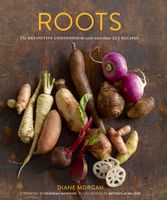Advertisement
History and Lore
By Diane Morgan
Published 2012
Cultivated potatoes all belong to one botanical species (Solanum tuberosum), but it includes thousands of varieties that vary by size, shape, color, water content, and starch level. A member of the nightshade family (Solanaceae), the potato is a perennial plant, usually grown like an annual, with fibrous roots and many rhizomes that become swollen at the tip, forming edible tubers. Potatoes are indigenous to the Andean region of South America and remains of wild tubers dating to 11,000 B.C. have been found in southern Chile. They were probably domesticated at least seven thousand years ago in the area around Lake Titicaca, in Bolivia and Peru. Early specimens, which looked nothing like modern potatoes, were most likely dark purple with yellow flesh. In the sixteenth century, Spanish explorers searching for gold observed potato cultivation in Peru, Bolivia, Colombia, and Ecuador, and potatoes were reportedly carried from the port of Cartagena in Colombia to Spain around 1570. From there, the tubers spread throughout Europe, although misinformation regarding the potato’s association with the nightshade family kept it from gaining widespread acceptance on the dinner table. Instead, it became a food for the poor and infirmed and for animals. Some ministers preached against eating the “ungodly root,” despite the lack of references to it in the Bible.

